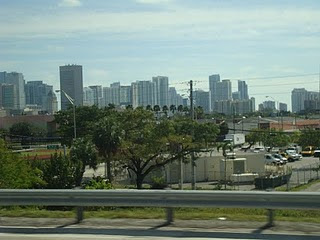Although most of the inhabitants of what is now known as Miami were the Tequesta Indians, the name of this city owes to the Indians called Mayaimi which were located around Lake Okeechobee, formerly Mayaimi and the river Mayaimi that means clear water in the indigenous language. Then came Ponce de Leon, seeking the fountain of youth. According to the version of Hernando de Escalante Fontaneda a wrecked Spanish as a child in Florida who was raised by the Indians for 15 years, as was later published in the "History of Spain in the New World" by Antonio de Herrera y Tordesillas, published in 1575, Juan Ponce de Leon was seeking the fountain of youth in these parts for many years.
Ponce De Leon had led the colonization of Puerto Rico. It was there where he heard stories that the Indians of a region at the north often went to a fountain where an old man after diving could regain his youth, getting a wife and rise new children. Ponce De Leon came to Florida in 1513, but never located neither he nor any other Spanish of many who sought it, the magic fountain of youth.
This area was never established by the Spanish because after multiple military campaigns to settle the Indians they could not break them but they were capable of exterminate them. Incidentally the Spanish managed to install a Christian mission in the eighteenth century, in the area of Tagestas run by the Jesuits, from where they were trying to convince mayamienses prisioners, after a series of torture by soldiers, that there was a God better than theirs, full of goodness and wisdom, and that if they do what their torturers wanted, they were to achieving happiness… after death. Finally the Spanish abandoned not only Miami but all of Florida to Cuba taking as slaves the last survivors of the extermination. Not only because of the forced labor used by the colonizers, but because of the young men separated from women as well, preventing their reproduction. The current indigenous Florida Seminoles are not native to these areas, arrived later from Georgia, fleeing in terror of the nascent American nation army that chased them as buffalos to send them, according to the plan, as to all Indians of the country to the territory of Oklahoma.
The turning point occurs in Miami in 1891 when Julia Tuttle purchased 640 acres at the mouth of the river Mayaimi, now known as Miami River. Then he convinced Henry Flagler, the billionaire owner of the Florida East Coast Railroad train to carry the rail line to Miami to build a luxury hotel. So they built the Hotel Ponce de Leon of 500 rooms which was an immediate success, supported by the legend of the fountain of youth. That was the beginning of the great growth of tourism in this city. In 1890 there were 851 inhabitants in the area. Today there are 5 ½ million people.
Today Miami is the fourth most populous city in the United States. 81% of its population is Hispanic, 22% is black and 12% are White. It is the city with the highest immigration in North America since 60% of the population born outside the United States. 34% born in Cuba, Nicaragua 6%, 5% in Haiti, 3% is Honduran, 2% is Dominican and another 2% is Colombian. In Miami, 67% of people recognize Spanish as their first language as against just 25% who said that his first language is English. This great migration has resulted in the emergence of neighborhoods named after cities in Latin America and elsewhere. Although the best known are Little Havana and Little Haiti, there are also Little Bogota, Little Caracas, Little Managua, Little Moscow, and Little San Juan.
Obviously, the more immigration is the Cuban, as during the 60s came and stayed to live in Miami half million Cubans. Then came the great immigration of so-called Marielitos in 1980 where arrived on the beaches of Miami a total of 100,000 Cubans.
Despite being the third richest American city and the apparent rapid growth of business and tourism Miami is now the third U.S. city with the highest poverty rate with 27% of its population, surpassed only by Detroit in Michigan and El Paso Texas.
The city was devastated by Hurricane Cleo in 1964 and then has been hard hit by Hurricane Betsy in 1965, Andrew in 1992 and Katrina and Wilma in 2005. Along with Nassau, Bahamas, and Havana is one of the cities most likely to be devastated by a hurricane in the future. We hope it never happens. The city of Miami was awarded as the cleanest city in America by Forbes Magazine due to its air quality, their ample green spaces, its recycling program and its clean streets and water for human consumption.






No hay comentarios:
Publicar un comentario